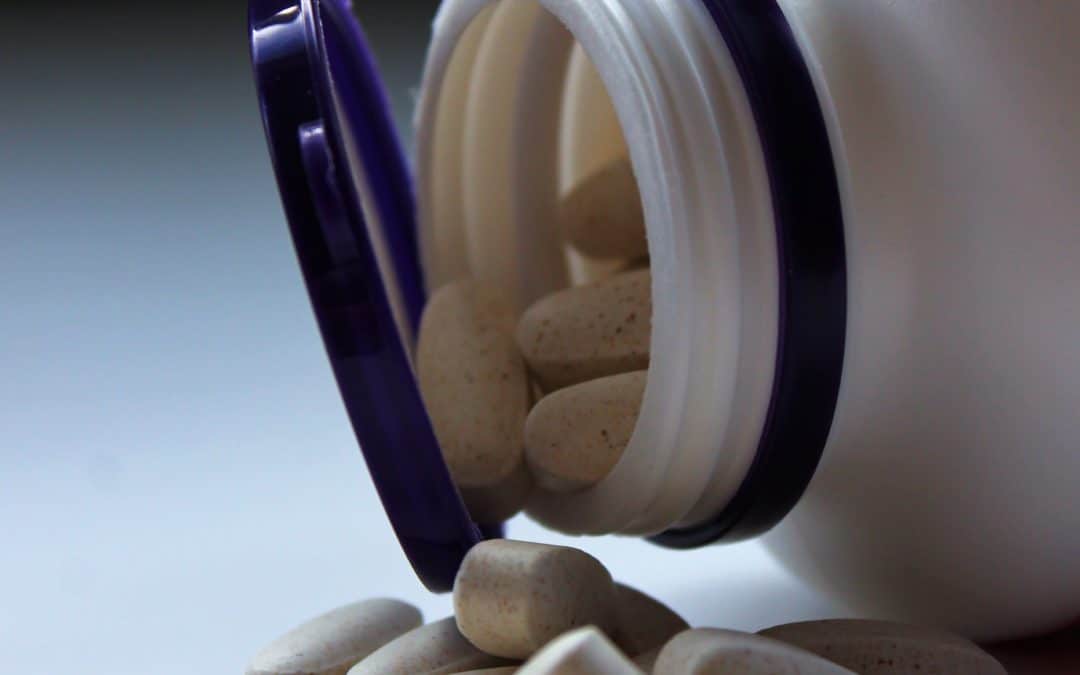
Q&A: Why Predicting Drug Shortages Isn’t the Answer for Pharmacy Leaders
We talked with OrbitalRX CEO Adam Orsborn, PharmD, and Chief Product Officer Nate Peaty, PharmD, about predicting and managing drug shortages in the age of artificial intelligence. Their answers, based on real-world experience in hospital health systems, may surprise you.
With technology such as artificial intelligence and big data, can’t we predict drug shortages yet?
Peaty: We’re excited to bring capabilities like advanced data analysis, AI and machine learning to help hospital pharmacy leaders. Ask a pharmacy leader, “Would you like the ability to predict shortages?” and of course they would say yes. But how possible is that? It’s debatable. It’s unlikely you can conclusively identify an impending shortage – for example, say with 100% certainty that six weeks from now, a specific med is going to go short.
But we can identify risks and probabilities and provide tools for your health system to effectively manage shortages, so the pharmaceuticals you need are there when you need them.
What about app vendors who claim to predict drug shortages?
Orsborn: It’s much easier to say in marketing materials that you’re using AI to do something really cool, than it is to actually do it. Anybody can dial up AI or machine learning, but you must have a robust and appropriately organized data set for these sophisticated tools to work for you.
You not only have to focus on the data, you also have to take those insights and make sure they fit with your hospital’s workflow. The way each hospital actually works is somewhat unique, and if a software solution doesn’t fit your workflow, and doesn’t work the way you work in the real world, what good is it to you?
Let’s say you could actually predict a drug shortage. What would happen?
Peaty: First ask, “How would knowledge of that impending shortage shape the decisions you make and the actions you take as an organization?” If there’s a 75% chance this med may go short, do you stock up? Do you spend an extra $50,000 to $100,000 stockpiling that med to try to protect yourself from a potential shortage?
If the shortage doesn’t happen, then you just needlessly went over budget on that product. There’s a real financial risk to you acting in a preventative way, anticipating the probability of a shortage that isn’t guaranteed.
Beyond that, if you predict a shortage next week and spook every pharmacy buyer in the country to stock up, it’s going to take out the supply chain. You’re going to go from the possibility of a shortage next week to a guaranteed shortage today, where the system is triggering shortages in the supply chain that may have been otherwise managed. That’s panic buying, and there’s enough panic buying in the marketplace already.
So predicting a drug shortage isn’t the best approach?
Peaty:
The challenge is to use big data, machine learning and AI collaboratively to stabilize, not destabilize, our national health system. We have to think beyond panic buying, which becomes a self-fulfilling prophecy of medication shortages, and instead focus on broader, higher-level objectives.
For us, those objectives are to understand the overall infrastructure that every hospital in this country is working in and depending on, and help health systems navigate that to ensure every health system is getting what they need for their patients.
As we continue to grow and expand the data we’re bringing into the system, we believe AI and machine learning will be best deployed to help identify where you have strategic risks, rather than an acute risk that tends to be addressed through a panic buy or hoarding type of behavior.
What will help health systems manage medication shortages?
Peaty: Our approach at OrbitalRX is to stabilize your pharmacy and health system. We can give you advanced awareness of a supply chain risk, for example, and give you tools to take useful actions with that knowledge.
Let’s look at what inventory you’re carrying in your hospital. How consistently have those products been available in the past? Are there certain items you’re dependent on just one supplier to provide? We help you proactively identify strategies around that, which includes finding additional suppliers for those meds and exploring alternatives.
Helping you easily see, organize, and put all of that information together, in a way that fits your workflow, will enable you to better manage drug shortages.
I want us to consider a more thoughtful approach discussing the harm that comes trying to anticipate shortage, from hoarding and not having solid information about all of the sources available to you in your market. LogicStream is still saying that they have an “early warning” system. While that is not prediction, it has the same negative downstream impacts of potentially creating or worsening a shortage where none exists. At OrbitalRx we partner with health systems and industry stakeholders to make the problem of shortages better for everyone. The more organizations that join our cause, the better it gets for everyone. We work to ensure you have all of the information that you need to make the most responsible decision for your patients and all patients who need these medications.
Where do health systems need to focus in order to better manage drug shortages?
Orsborn: We focus on these key areas: your inventory, your supply chain, and how you organize your workflow and communicate your strategy throughout your organization.
In the first area, we help you conserve the inventory you have, using a real-time view of your inventory. What product you have, where it’s at, how fast it’s moving out of your system, and what has happened with this product historically. This helps you better manage what’s happening internally, without affecting the market more broadly.
In the second area, we give you a bigger and better view into what else might be available. We show you all the potential options, in terms of medication alternatives and available suppliers across catalogs. In this way you can spread out your buying strategies, be more secure in them, and quickly see at any time all the options available to you.
The third area, workflow and communication, is about giving you the tools to help you organize and automate all of this information so it’s readily available, wherever you are. Much better than the old way of manually organizing it into spreadsheets that then sit in people’s inboxes.
By focusing on all three of those areas, you can be as responsive as you need to be to effectively manage shortages, regardless of whether there’s an early warning or not.
Are there clues pharmacy leaders should pay attention to?
Peaty: There are data signals that help our clients stay alert to when things are starting to change. It’s all about situational awareness, which means taking the information we make available to you currently and staying alert to where things may be starting to change.
The trick is to identify which data signals and patterns are most consistent with supply chain risk, and then take informed action. With awareness of your current inventory situation, as well as the external supply options in terms of alternative drugs and suppliers, you can use that information to make faster and more informed decisions.
When it comes to managing drug shortages, does what works for one hospital health system also work for another?
Orsborn: The situational awareness around inventory and supply chain is important for every health system. What’s key is for a drug shortage management system to work the way hospital pharmacy departments actually work today. We hear that in every demo we do: the importance of aligning with the health system’s real-world workflow.
Peaty: Most hospitals follow a fairly consistent process: Everybody is contacting their suppliers, their buyers are shopping online, they’re meeting regularly to update stakeholders, and they’re communicating out to external stakeholders. But each site is different and has their own unique challenges, and their workflow has its own special flavor.
We have to be flexible enough to allow sites to work the way they work best, and recognize the things that have worked best for them in the past. But we also have to allow enough structure across each site so we can provide a consistent service and solution for all of our users. With that balance, we can help your health system, as well as the overall national health system, work better.
What’s next in terms of better managing medication shortages?
Peaty: We believe we can do more things collaboratively, and with more transparency, that will help stabilize the national health system, make your health system site the best it can be, and do that in a way that results in a better, more sustainable supply chain.
Things like panic buying and stockpiling don’t help. Our focus is to help you make smarter and more strategic decisions, and to connect those efforts of pharmacy leaders as well as medication suppliers to make the whole system better.
Interested in learning more? The OrbitalRX drug management solution helps reduce complexity, proactively manage data and workflows, and better communicate with hospital leaders and other departments for effective drug shortage management.
To schedule a demo of the OrbitalRX solution, send us a message.
Related:
- Former hospital pharmacy leaders offer drug shortage management solution
- Hospital drug shortages: Patients are feeling the impact
- How to communicate to hospital leaders about drug shortages




 Hospitals nationwide have struggled with their drug shortage strategy during the COVID-19 pandemic, from tests to personal protective equipment (PPE) to other supplies, such as ventilators. While hospitals are beginning to get these shortages under better control, they are confronting a growing challenge: The outbreak has placed a significant strain on the drug supply chain, leading to warranted fears about drug shortages and their effects on patients and providers.
Hospitals nationwide have struggled with their drug shortage strategy during the COVID-19 pandemic, from tests to personal protective equipment (PPE) to other supplies, such as ventilators. While hospitals are beginning to get these shortages under better control, they are confronting a growing challenge: The outbreak has placed a significant strain on the drug supply chain, leading to warranted fears about drug shortages and their effects on patients and providers.